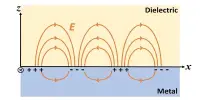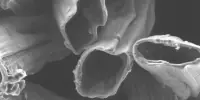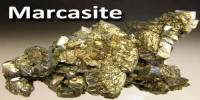For nearly 2,000 years, humans have been aware of the unusual phenomena of magnetism. Researchers have continuously advanced humanity’s fundamental understanding of magnetism from ancient Greece to present times.
Magnetism has been recognized to form in solid-state materials for over a century when electronic spins (a quantum mechanical feature) and their motion around atoms develop a fixed orientation within the material due to electronic and chemical interactions.
Physicists, chemists, and materials scientists have been developing comprehensive theoretical and experimental equipment to forecast and characterize magnetic materials since their discovery.
Despite a concerted effort involving numerous competing theories (and several Nobel Awards), a coherent description of magnetic structures within materials has eluded researchers. In fact, until now, even the most successful categorization system for magnetic materials, devised by Soviet scientist Lev Shubnikov about 75 years ago, was incomplete.
This week, an international team of academics revealed that the mathematical characterization of Shubnikov’s magnetic and nonmagnetic crystal symmetry groups was finally finished.
Scientists from the Massachusetts Institute of Technology (MIT), Princeton University, the University of the Basque Country in Bilbao, Spain, Northeastern University, the Max Planck Institute of Microstructure Physics in Halle, Germany, and the University of Illinois at Urbana-Champaign collaborated on the research.
The team’s results were published Oct. 13, 2021, in Nature Communications in the article “Magnetic topological quantum chemistry.”
In the crystallography and magnetic structure communities, we have been awaiting an accessible and complete guide to the magnetic coreps since before I was born. We can now robustly characterize all possible magnetic phase transitions in experimental studies of magnetic materials typically done by neutron diffraction experiments without falling back on the incomplete representation-theory method.
Luis Elcoro
A long road from there to here
Representation theory, which provided a simplified picture of magnetism in which much of the underlying material structure is ignored and the magnetism is described through repeating electronic spin waves partially decoupled from the rest of the material, was one early description of magnetism that gained traction with many researchers.
The limitations of representation theory have been obvious since the 1950s. When even the most basic physical interactions between electron spins and the underlying atoms are taken into account, the theory collapses.
Shubnikov, on the other hand, addressed all of the difficult crystal symmetries and then the even more complicated ways in which those symmetries can be reduced by magnetic ordering when classifying materials by their geometry.
Shubnikov’s approach permits all magnetic and nonmagnetic crystals to be categorized by one of just 1,651 symmetries known as magnetic and nonmagnetic space groups (SGs).
The complete mathematical features known as “small corepresentations” (coreps) for 230 of Shubnikov’s SGs have been known for over 50 years. Because of the intricate symmetries of magnetic crystals and the sheer number of magnetic SGs, the coreps of magnetic SGs have remained mostly unknown and inaccessible.
To ensure internal consistency, the researchers meticulously derived the over 100,000 tiny coreps of the MSGs in the current work using many redundant calculations.
Open-access database
Luis Elcoro, a professor at the University of the Basque Country and one of the study’s lead authors, wrote computer code to generate an extensive set of publicly available resources on the Bilbao Crystallographic Server based on the team’s findings, allowing researchers from all over the world access to the data.
Elcoro comments, “In the crystallography and magnetic structure communities, we have been awaiting an accessible and complete guide to the magnetic coreps since before I was born. We can now robustly characterize all possible magnetic phase transitions in experimental studies of magnetic materials typically done by neutron diffraction experiments without falling back on the incomplete representation-theory method.”
Quantum applications
Recognizing a mathematical link between magnetic coreps and the electronic structure of solid-state materials, the team went on to perform additional calculations to link the resulting magnetic symmetry data to exotic electronic states such as topological band insulators and semimetals with tantalizingly intricate mathematical descriptions. These states have the potential to be used in quantum applications such as quantum information engineering and quantum spintronic devices.
Benjamin Wieder, a postdoctoral researcher at MIT and Northeastern University and the study’s lead author, used a combination of mathematical theory and by-hand, brute-force calculations to deduce the exhaustive classification of magnetic topological insulators using Elcoro’s symmetry tools.
“Over the holidays in 2019, I would email Elcoro my attempted classification for a couple magnetic SGs each day,” remembers Wieder. “I spent most of that holiday break scribbling drafts of the classification between meals and dessert, much to the bewilderment of my friends and family.”
Magnetic Topological Quantum Chemistry
Elcoro and Wieder’s work was subsequently merged with that of Barry Bradlyn, a physics professor at UIUC, to form a novel theory called Magnetic Topological Quantum Chemistry (MTQC). In terms of position-space chemistry and magnetic order, MTQC can characterize all potential topological electronic bands.
The positions and types of atoms in the crystal, as well as the magnetic orientation, are fed into MTQC, which returns the set of topological properties that can be used. Members of the same cooperation set the groundwork for MTQC four years ago in a seminal publication titled Topological Quantum Chemistry.
Bradlyn, who was lead author on the original Topological Quantum Chemistry paper, notes, “MTQC answers some of the largest outstanding questions raised by our previous work. If we wanted to consider magnetism in a topological material, we would previously have had to start from scratch each time. By applying the same position-space tools we developed for Topological Quantum Chemistry, we now have a unified understanding of topological insulators in magnetic and nonmagnetic materials.”
Materials simulation by numerical methods
The researchers next turned to Zhida Song and Yuanfeng Xu to connect MTQC to computationally efficient symmetry and topological diagnoses of real magnetic materials, building on Elcoro and Wieder’s computations.
Song, a Princeton University postdoctoral researcher, is well-known for his past work on numerical approaches for identifying topological insulators in materials simulations. Song used theoretical calculations to connect Wieder’s classification to Song’s earlier work on nonmagnetic materials for this study.
Song sums up the outcome of the team’s multilayered efforts, “When the dust settled, we were sitting on the first-ever universal guide to magnetic topological insulators in real materials.”
Xu, a postdoctoral researcher at the Max Planck Institute of Microstructure Physics, validated the underlying theory by performing large-scale numerical simulations of theoretical models and real magnetic materials in the study’s final phase.
In addition to his contributions to the current study, Xu was the lead author on an associated article published in Nature earlier this year, in which he and his colleagues used MTQC to conduct the first-ever high-throughput search for magnetic topological materials.
“MTQC represents over four years of intense study by our collaboration,” said Andrei Bernevig, a professor at Princeton University and the lead investigator of both works.
Given that the last two years of collaboration and writing on the two publications, which totaled over 400 pages, were done remotely during the Covid-19 pandemic, Bernevig concluded: “it is a testament to the otherworldly dedication and focus of our team that we were able to persist and complete this longstanding problem.”
This work was funded by the US Department of Energy, the National Science Foundation, the Simons Foundation, the US Office of Naval Research, the Packard Foundation, the Schmidt Fund for Innovative Research, the US-Israel Binational Science Foundation, the Gordon and Betty Moore Foundation, the John Simon Guggenheim Memorial Foundation, the Government of the Basque Country, the Spanish Ministry of Science and Innovation, the European Research Council, the Max Planck Society, and the Alfred P. Sloan Foundation. The findings are those of the researchers and not necessarily those of the funding agencies.
















